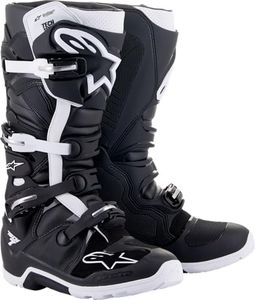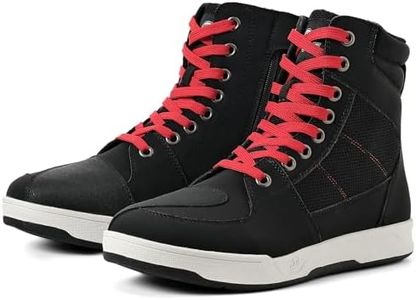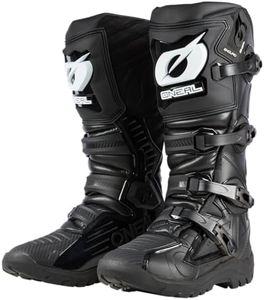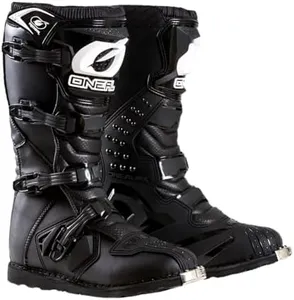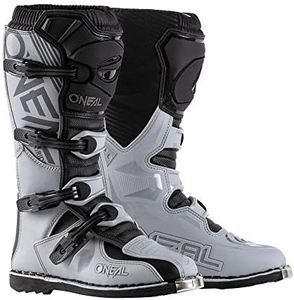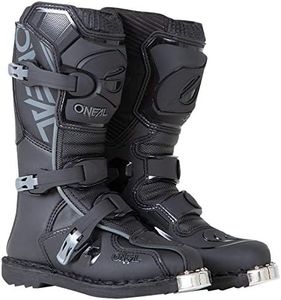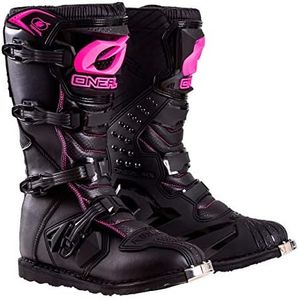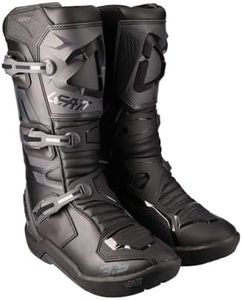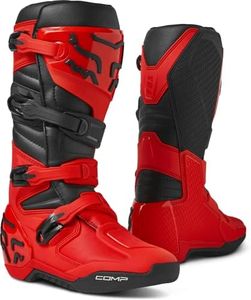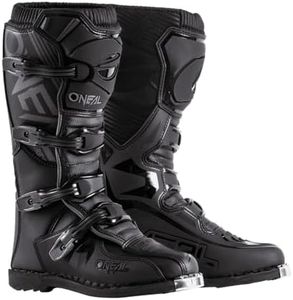We Use CookiesWe use cookies to enhance the security, performance,
functionality and for analytical and promotional activities. By continuing to browse this site you
are agreeing to our privacy policy
10 Best Motocross Boots
From leading brands and best sellers available on the web.Buying Guide for the Best Motocross Boots
Choosing the right motocross boots is crucial for both comfort and protection while riding. These boots shield your feet, ankles, and lower legs from impacts, twisting injuries, and the elements. The best boots for you depend on your riding style, how often you ride, and your experience level. Take your time trying on different pairs, make sure they fit well, and don't compromise on safety features.Protection FeaturesProtection features refer to the design elements that safeguard your foot, ankle, and shin from injury during a motocross ride. Good boots will have reinforced shin plates, ankle protection, and toe boxes. The amount of coverage and rigidity can vary: entry-level boots may offer basic coverage, while advanced boots have rigid protection for aggressive riding. If you’re just starting or ride lighter trails, moderate protection might be sufficient, but advanced or competitive riders should look for maximum protection to reduce the risk of injury.
Boot MaterialsThe materials used in motocross boots affect durability, weight, flexibility, and protection. Most boots blend synthetic materials, leather, and plastic reinforcements. Leather offers better flexibility and comfort over time, whereas synthetic and plastic enhance protection and keep boots lightweight. Higher-end boots may use more premium materials for a balance of flexibility and durability. If you ride often or in harsh conditions, choose boots made with tougher, more resilient materials. If comfort is a priority and you ride casually, softer materials may be acceptable.
Closure SystemThe closure system refers to the way the boots are fastened to your feet. Common systems include buckles, straps, and sometimes Velcro. A good closure system keeps the boots secure and snug, preventing them from coming off or loosening during a ride. Simple systems with reliable plastic or metal buckles work for most casual riders, while competitive riders may appreciate micro-adjustable buckles for a really precise fit. If you have difficulty with certain types of fasteners, look for a system you can easily manage with your gloves on.
Sole TypeMotocross boots use different soles, typically divided into stitched-on, glued (molded), and sometimes replaceable soles. Stitched soles are generally more durable and can be replaced, making them good for frequent riders. Molded soles are lighter and sometimes more comfortable for those walking off the bike, but might not last as long with heavy use. If you're racing or riding rough tracks, look for a rugged, replaceable sole. If you’re mainly trail riding or walking around more, comfort-oriented soles might be better.
Fit and ComfortHow the boots fit is one of the most important aspects, affecting your ability to control the bike, stay comfortable, and prevent blisters. Boots should be snug but not painfully tight, allowing a little bit of toe wiggle and good support for the ankle and calves. Motocross boots can feel stiff at first but will break in over time. If possible, try them on with riding socks, walk around, and check for pressure points. Prioritize fit and comfort according to how long your typical rides last—longer rides usually require more focus on comfort.
Water Resistance and VentilationSome motocross boots are designed to keep water out, while others add vents for better airflow. Full waterproofing is important for wet, muddy riding, but it can make the boots warmer and sweatier. If you ride in hot, dry environments, you might prefer boots with better ventilation to keep your feet cool. Consider the typical weather and terrain you ride in to decide whether you need more water resistance or more ventilation.
